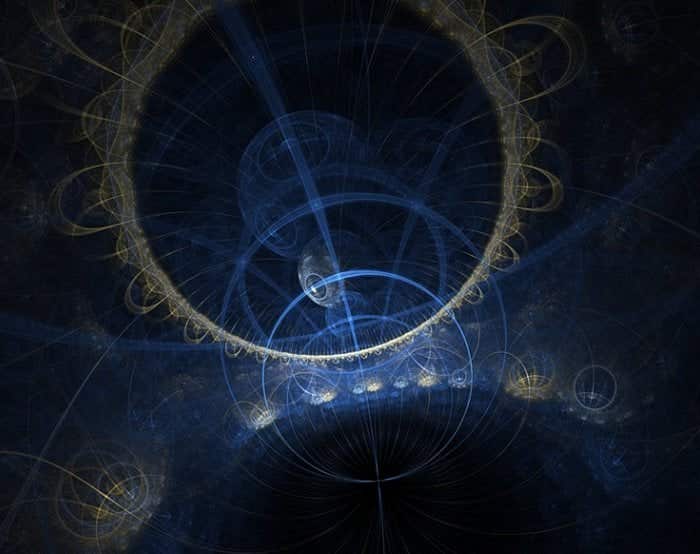Scientists developed a revolutionary new way to measure time
Despite significant advancements in the field of time measurement the fundamental operating principle of these devices remains the same.

[June 8, 2023: Staff Writer, The Brighter Side of News]
Recent developments have introduced a novel time-measuring device that is unlike any watch that has come before it. (CREDIT: Craetive Commons)
The history of timekeeping is a long and fascinating journey that began more than 5,000 years ago in ancient Egypt and Babylon with the invention of sundials and hourglasses. Despite the significant advancements in the field of time measurement over the years, including the development of digital watches and cesium atomic clocks that lose only one second every 100 million years, the fundamental operating principle of these devices remains the same as that of a sundial.
However, recent scientific developments, published in the journal Physical Review Research, have introduced a novel time-measuring device that is unlike any watch that has come before it. This new timepiece is based on the principles of quantum mechanics and lacks a "time zero," introducing a new level of quantum weirdness.
Conventional time-keeping clocks operate by measuring the time taken to complete a predefined cycle or the period between two intervals. This includes the full swaying motion of a pendulum or the elapsed time between the starting and finishing position of a person running on a track. While this approach works exceptionally well for most practical purposes, researchers from the University of Uppsala in Sweden and the University of Tartu in Estonia sought to explore an entirely different method of time measurement.
Their objective was to develop a watch that does not require an initial point of reference, commonly known as "T zero." To accomplish this ambitious task, the researchers turned to atoms in a Rydberg state - a state where the electrons from atoms become highly excited and are pushed far away from their nucleus. This high-energy state can be achieved with the assistance of lasers.
Related Stories
By manipulating these Rydberg atoms, the researchers were able to create a watch that operates on the principles of quantum mechanics. Unlike traditional watches, which measure time by referencing a specific point in time, the quantum watch measures time as a continuous flow, without the need for a "T zero" reference.
To measure time, the quantum watch uses the phenomenon of entanglement - a concept in quantum mechanics that describes the interconnectedness of two particles, even when separated by great distances. By entangling particles, the researchers were able to measure the passage of time accurately.
In previous research, it was shown that multiple Rydberg-energized atoms in the same space create interferences that cause ripple patterns in the quantum pond. A large enough number of these atoms dancing in the same space results in unique evolving patterns that each represent the length of time it took to evolve compared to others nearby. Despite all this, they can be used as precise time stamps.
An ultrashort XUV pulse, shown in purple, with center energy close to the ionization threshold, is used for creating a coherent superposition of Rydberg states. Subsequently, an ultrashort NIR laser pulse, shown in red, ionizes the excited atom, resulting in photoelectrons with a kinetic energy of E[kin]. (CREDIT: Physical Review Research)
In the course of their experiments, the physicists utilized a laser to excite helium atoms. Meanwhile, another laser released short pulses of ultraviolet light that gauged the spectrum of the Rydberg state atoms.
The resulting time-measuring device, or "watch" rather than clock, was capable of measuring durations as short as 81 picoseconds, or one trillionth of a second, with an error margin of no more than 8 femtoseconds, or one quadrillionth of a second. Rather than counting units of time, this device merely displays the time by deducing it from the interference structure, representing a rather ingenious method of time measurement.
The proportion of experimental slices, with different lengths, that were assigned a correct time delay when compared to a 10 ns simulated range. (b) The difference between QUBS-time and DS-time for 24 slices that are 2 ps long, with starting point given by the horizontal axis. (CREDIT: Physical Review Research)
According to the researchers' study, oscillations resulting from an ensemble of highly excited Rydberg states produce a distinctive interference pattern that does not repeat throughout the wave packet's lifespan.
"These fingerprints determine how much time has passed since the wave packet was formed and provide an assurance that the measured time is correct," the team explained. Furthermore, "Unlike any other clock, this quantum watch does not utilize a counter and is fully quantum mechanical in its nature," the researchers added.
This innovative approach to time measurement could have numerous applications in physics, particularly those that necessitate high temporal accuracy of quantum mechanical system processes.
For more science and technology news stories check out our New Innovations section at The Brighter Side of News.
Note: Materials provided above by The Brighter Side of News. Content may be edited for style and length.
Like these kind of feel good stories? Get the Brighter Side of News' newsletter.
Joseph Shavit
Head Science News Writer | Communicating Innovation & Discovery
Based in Los Angeles, Joseph Shavit is an accomplished science journalist, head science news writer and co-founder at The Brighter Side of News, where he translates cutting-edge discoveries into compelling stories for a broad audience. With a strong background spanning science, business, product management, media leadership, and entrepreneurship, Joseph brings a unique perspective to science communication. His expertise allows him to uncover the intersection of technological advancements and market potential, shedding light on how groundbreaking research evolves into transformative products and industries.



